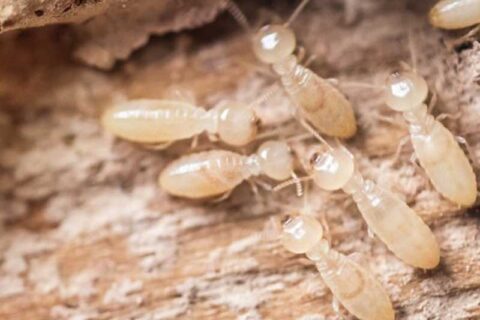Your Probability of Experiencing a Termite Infestation

The probability of an event occurring is something many of us learned in a mathematics or statistics course. “Probability” is a measure of the likelihood that an event will occur.1 Probability results are numbers, normally written as percentages.
If the result is zero or a very low percentage, then there is a low risk of the possibility of the event occurring. On the other hand, if the result is one or a very high percentage, then there is a high risk of the possibility of the event occurring.
When it comes to termites in Northern California and the Bay Area, there is a high probability of experiencing a termite infestation without any termite control measures. According to the U.S. Department of Housing and Urban Development (HUD), the states of California and Hawaii have been assigned termite infestation probability (TIP) Zone 1.2 This means the risks of a home becoming infested with termites is very high.
In fact, California is one of eight states that has a very high risk of termite infestations. Based on the termite infestation probability map published in the council of American Building Officials and shared by the U.S. Department of Veterans Affairs, you can clearly see most of California has a very high probability, while only a small section of the upper part of the state has a moderate to heavy risk of termite infestations.3
What Makes California a High-Risk Termite State?
Part of the reason California is ranked as a high-risk state for termite infestations has to do with the weather. California has very mild to moderate temperatures that remain fairly consistent year-round. In addition, the climate in California is ideal for many termite species, including drywood, subterranean, dampwood, and Formosan species.
To illustrate how probability works, let’s look at your Bay Area home. Outside in your yard, you have termite colonies on one side of the property, yet none elsewhere in the yard. For example, let’s assume the probability of infestation is 50% since there are colonies in just one area.

Now, a year later, there are colonies in the side yard and your front yard. Let’s assume the probability goes up to 75%. Another year later, there are now termite colonies in your yard all around your home. At this point, the probability of an infestation would be very close to 100%.
Granted, these are just rough examples of how probabilities work and do not get into every type of scenario. However, the purpose is to demonstrate that if there are termite colonies on your property, in all likelihood your home is at risk of infestation. In other words, it is not a matter of if but when termites will move into your home.
If you also take into account the different species of termites found in the Bay Area, the location of the home, and other such factors, the probability of termites infesting your home is very high. Don’t fool yourself into thinking your home is safe—because it is not.
To protect your home from termite infestations, you need to have it inspected regularly and implement the proper preventative termite treatments. Schedule an inspection of your home by calling MightyMite Termite Services at 408.335.7053 today!
Sources:
https://en.wikipedia.org/wiki/Probability
https://archives.hud.gov/offices/hsg/sfh/ref/sfh1-23sa.cfm.
https://www.benefits.va.gov/stpaul/images/rlc_memo_05_06.pdf









